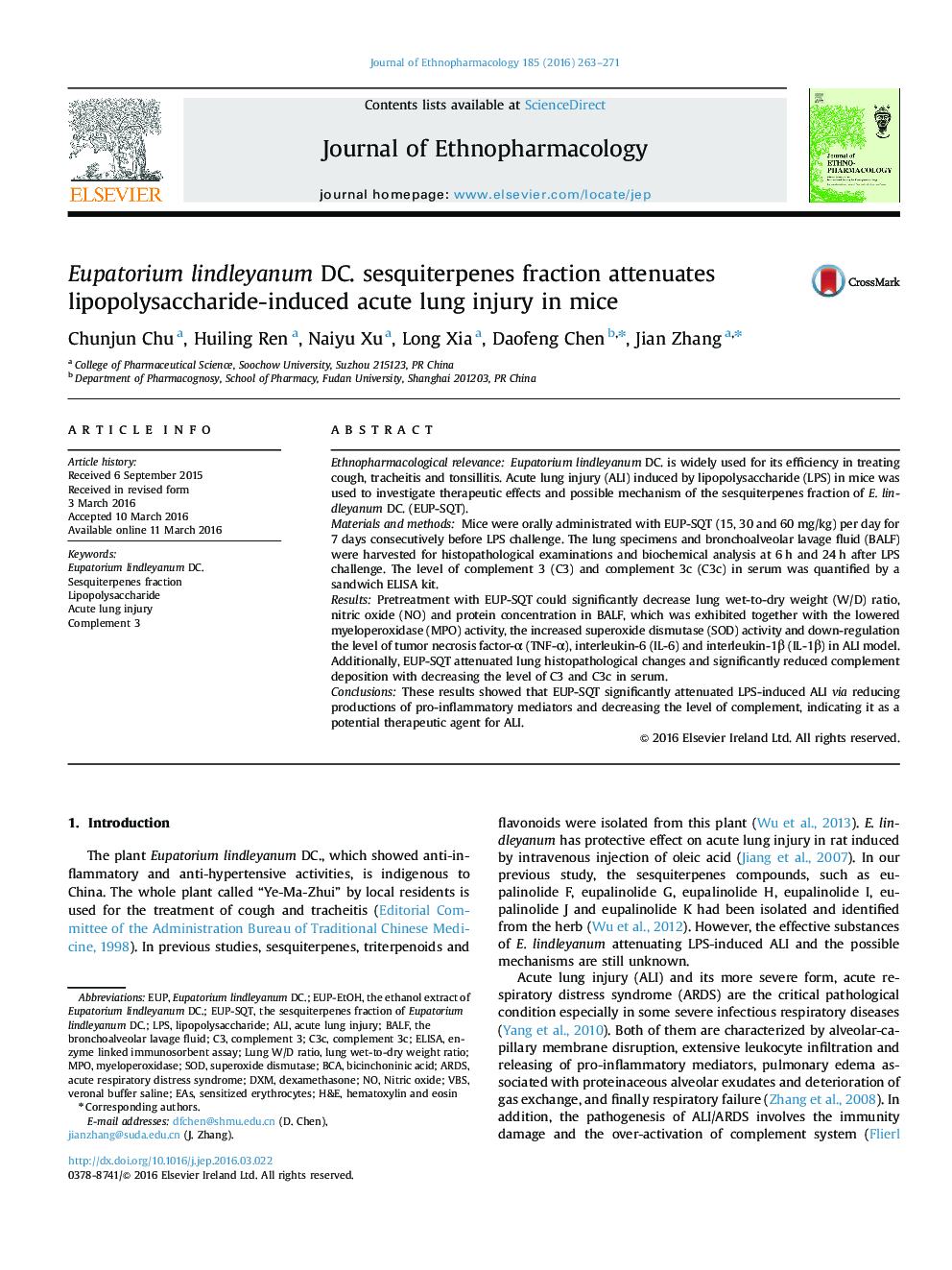| Article ID | Journal | Published Year | Pages | File Type |
|---|---|---|---|---|
| 2544843 | Journal of Ethnopharmacology | 2016 | 9 Pages |
Ethnopharmacological relevanceEupatorium lindleyanum DC. is widely used for its efficiency in treating cough, tracheitis and tonsillitis. Acute lung injury (ALI) induced by lipopolysaccharide (LPS) in mice was used to investigate therapeutic effects and possible mechanism of the sesquiterpenes fraction of E. lindleyanum DC. (EUP-SQT).Materials and methodsMice were orally administrated with EUP-SQT (15, 30 and 60 mg/kg) per day for 7 days consecutively before LPS challenge. The lung specimens and bronchoalveolar lavage fluid (BALF) were harvested for histopathological examinations and biochemical analysis at 6 h and 24 h after LPS challenge. The level of complement 3 (C3) and complement 3c (C3c) in serum was quantified by a sandwich ELISA kit.ResultsPretreatment with EUP-SQT could significantly decrease lung wet-to-dry weight (W/D) ratio, nitric oxide (NO) and protein concentration in BALF, which was exhibited together with the lowered myeloperoxidase (MPO) activity, the increased superoxide dismutase (SOD) activity and down-regulation the level of tumor necrosis factor-α (TNF-α), interleukin-6 (IL-6) and interleukin-1β (IL-1β) in ALI model. Additionally, EUP-SQT attenuated lung histopathological changes and significantly reduced complement deposition with decreasing the level of C3 and C3c in serum.ConclusionsThese results showed that EUP-SQT significantly attenuated LPS-induced ALI via reducing productions of pro-inflammatory mediators and decreasing the level of complement, indicating it as a potential therapeutic agent for ALI.
Graphical abstractFigure optionsDownload full-size imageDownload high-quality image (244 K)Download as PowerPoint slide
